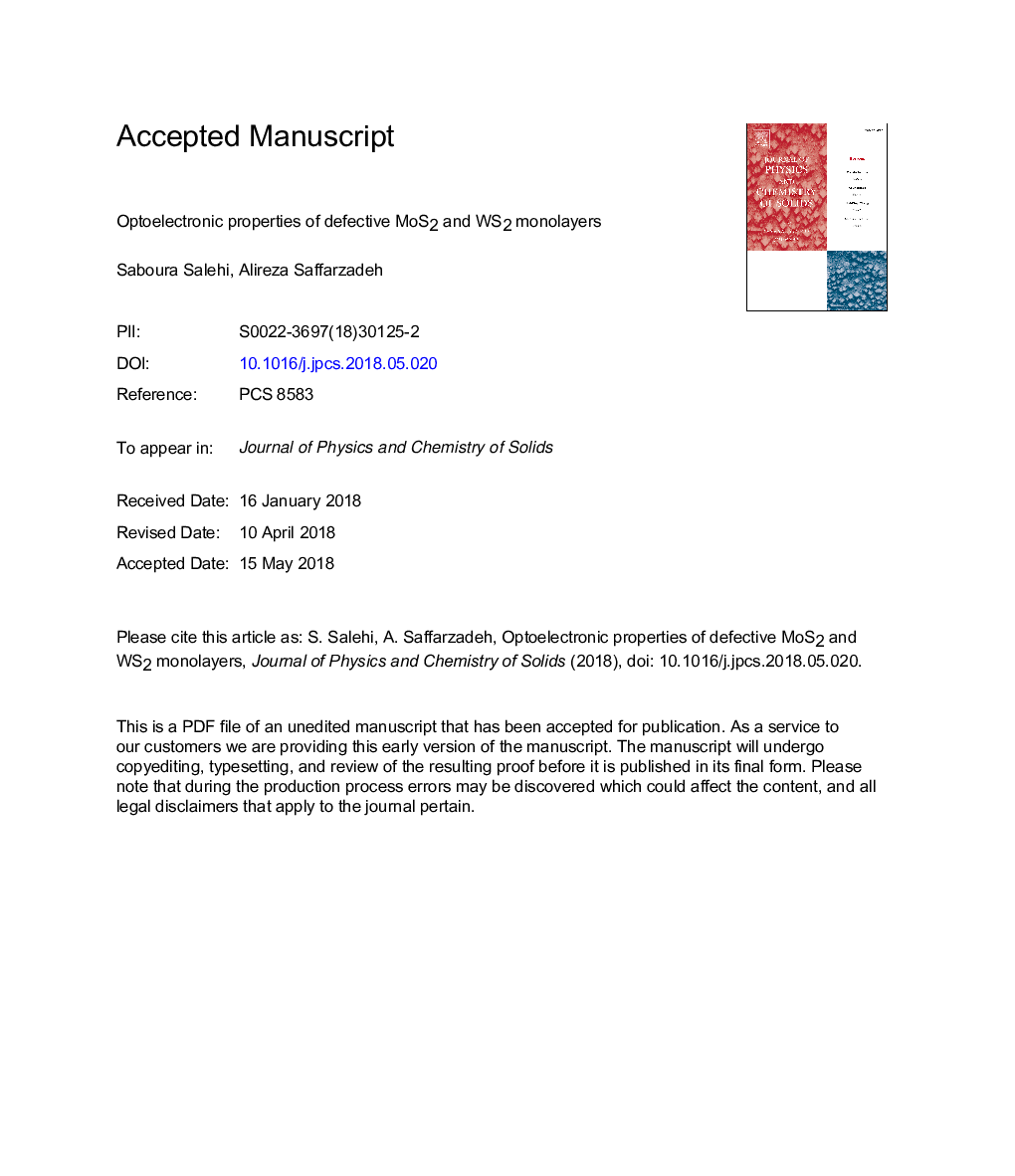| Article ID | Journal | Published Year | Pages | File Type |
|---|---|---|---|---|
| 7919933 | Journal of Physics and Chemistry of Solids | 2018 | 9 Pages |
Abstract
We theoretically explore the effect of metal and disulphur vacancies on electronic and optical properties of MoS2 and WS2 monolayers based on a Slater-Koster tight-binding model and including the spin-orbit coupling. We show that the vacancy defects create electronic flat bands by shifting the Fermi level towards the valence band, indicating that both types of vacancies may act as acceptor sites. The optical spectra of the pristine monolayers show step-like features corresponding to the transition from spin split valence band to the conduction band minimum, whereas the defective monolayers exhibit additional peaks in their spectra arising from induced midgap states in their band structures. We find that Mo and W vacancies contribute mostly in the low-energy optical spectrum, while the S2 vacancies enhance the optical conductivity mainly in the visible range of the spectrum. This suggest that depending on the type of vacancy, the atomic defects in MoS2 and WS2 monolayers may increase the efficiency of solar cells used in photovoltaic systems.
Related Topics
Physical Sciences and Engineering
Materials Science
Electronic, Optical and Magnetic Materials
Authors
Saboura Salehi, Alireza Saffarzadeh,
